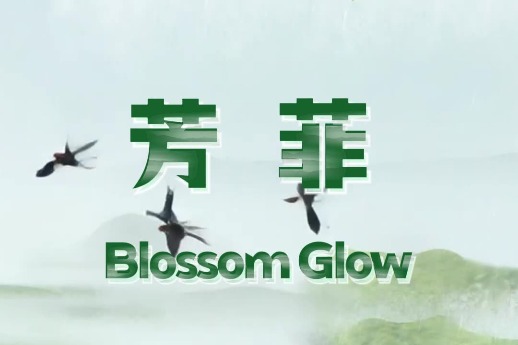Drier lunar far side offers insight on moon's evolution

BEIJING -- The latest discovery from rock samples returned by China's Chang'e 6 lunar mission reveals that the moon's mantle contains less water on the far side compared to the near side, suggesting that the "hidden hemisphere," which always faces away from Earth, tends to be much drier.
Published in the journal Nature on Wednesday, a new study by Chinese scientists found that the water content in each gram of the thick rocky layer beneath the moon's far side surface is less than 2 micrograms, the lowest record ever reported.
Previous studies on samples from the lunar near side have shown that the water concentrations within the moon's interior could reach up to 200 micrograms per gram.
"Such concentration in the new study can be measured between 1 and 1.5 parts per million," said lead researcher Hu Sen, a professor from the Institute of Geology and Geophysics of the Chinese Academy of Sciences.
"Even the driest desert on Earth contains around 2,000 parts per million of water - over a thousand times more than what's found on the lunar far side surface," Hu explained.
The global scientific community widely believes that the moon was formed when a Mars-sized object collided with Earth 4.5 billion years ago. During this extremely hot impact event, the moon was thought to be depleted of water and other volatile elements.
Over the past two decades, there has been debate about whether the water content in the moon's mantle, the middle layer between its surface and its core, is abundant or scarce, and all the published estimates were derived from the near side samples of the moon.
The Chang'e 6 lunar probe launched in early May 2024, landed in the moon's South Pole-Aitken Basin and returned to Earth in late June with more than 1,935 grams of the first-ever samples from the less-known far side of the moon.
According to Hu, the moon samples used in this study weigh 5 grams, consisting of 578 particles ranging in size from 0.1 to 1.5 millimeters. These particles were carefully sieved and hand-selected, 28 percent of which were mare basalt fragments.
"These samples provide an opportunity to investigate the water abundance of the far side lunar mantle and to unravel potential differences between the moon's two sides," Hu said.
People on Earth can only ever see one lunar face because the moon takes about the same amount of time to rotate once as it does to complete a single orbit of Earth. As a result, scientists divide the moon into two hemispheres, namely the side that always faces us, known as the near side, and the one that is always turned away from us, which we refer to as the far side of the moon.
The moon's far side has long been considered quite different from its near side. The latest example is a study published in Nature in November 2024 by Hu's colleagues, based on lunar samples collected at the Chang'e 6 landing site. The study revealed that a unique volcanic event dating back 2.8 billion years had not been observed in previous samples obtained from the near side of the moon.
Other differences also appeared in geological structures, landscapes, chemical composition and crustal thickness.
For Hu and his team, the newly found disparity in the moon's internal water content is of great significance, which may offer a fresh insight into the moon's formation and evolution.
"The water content in the lunar rocks plays a crucial role in testing the hypothesis of the moon's origin," Hu said. "If the water concentration reaches as much as 200 parts in the moon's rocky layer, it could challenge the existing hypothesis of the impact origin, and scientists need to propose a new model to explore the starting point of the moon's formation."
The results of the new study shows that the lunar water content remains below this 200 parts threshold, thereby supporting the existing impact formation theory, Hu noted.
Francis McCubbin, the Astromaterials Curator at NASA's Johnson Space and a peer reviewer of the paper, called their work "a landmark study on the water abundance of the lunar far side."
China has plans to launch a number of new moon missions including building a permanent moon base and landing a taikonaut crew before 2030.
According to the scientists, the findings of this study also hold significant implications for future lunar exploration tasks, as water on the moon is key to long-term human settlement.
"Since the two faces of the moon feature distinct topographical characteristics, landing in areas with substantial terrain undulations may demand more advanced control technologies," Hu told Xinhua.
- Astronomers' dark energy breakthrough sheds new light on cosmic accelerated expansion
- China-led telescope project secures global partners for cutting-edge cosmic research
- Beijing on high alert for extreme winds
- Registration rules eased to encourage marriages
- Drier lunar far side offers insight on moon's evolution
- State Council watching over probe of deadly fire



































